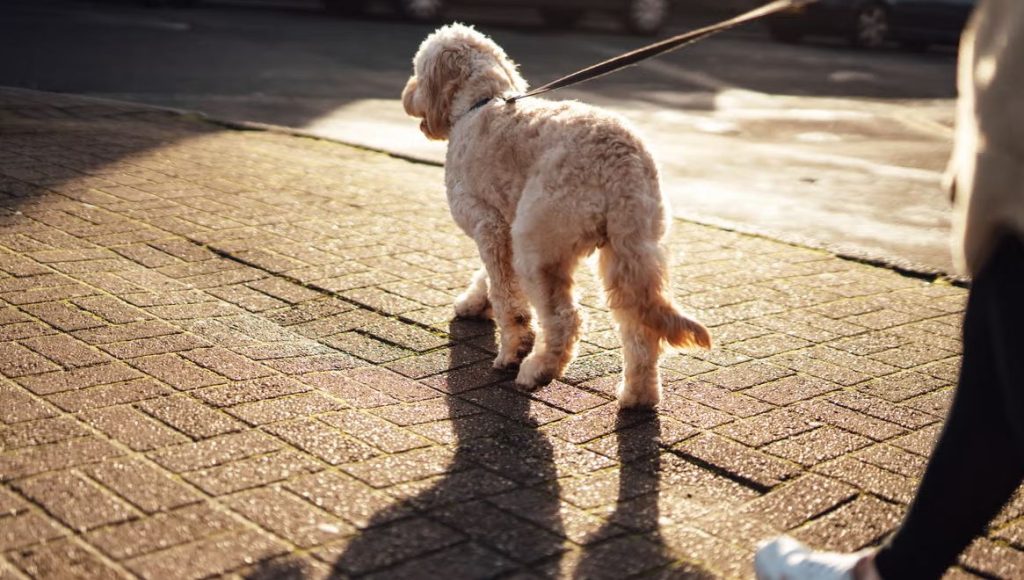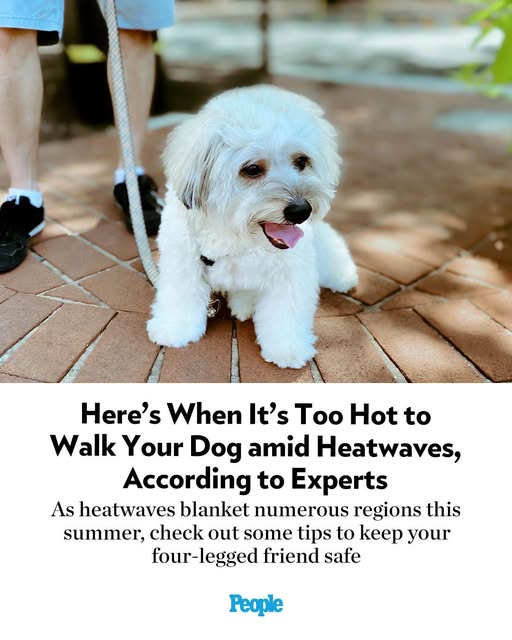Pet owners are being urged to reconsider their daily routines when it comes to walking their dogs. Experts warn that extreme heat can pose serious health risks to your furry companions.
The Dangers of High Temperatures for Dogs
Dogs don’t tolerate heat the same way humans do. Unlike us, they don’t sweat through their skin. Instead, they cool themselves by panting and releasing heat through their paw pads. This makes them particularly vulnerable to overheating and heatstroke—especially during hot pavement walks.

“Even a short stroll during the peak heat of the day can be dangerous for dogs,” says Dr. Danielle Bernal, a veterinarian and pet nutritionist. “Their bodies can overheat quickly, sometimes within minutes.”
Certain breeds are even more at risk. Flat-faced breeds like bulldogs, pugs, and boxers, as well as older dogs and puppies, are especially vulnerable due to restricted breathing or underdeveloped thermoregulation.
Check the Pavement Before You Walk
One of the most overlooked dangers during summer walks is the temperature of the pavement. Asphalt and concrete absorb and retain heat, which can burn your dog’s paw pads even if the air temperature seems moderate.
A general rule of thumb? Place the back of your hand on the pavement for 7 seconds. If it’s too hot for your skin, it’s too hot for your dog’s paws.
According to experts, when the air temperature reaches 85°F (29°C), pavement surfaces can reach a scorching 130°F (54°C). At this temperature, skin damage can occur in less than a minute.
The Best Times to Walk Your Dog in Summer
To keep your pet safe, experts recommend walking your dog early in the morning or later in the evening—when temperatures are significantly cooler. Ideally, aim for before 9 a.m. or after 7 p.m. Shady routes and grassy areas are better options than direct sunlight and hard pavement. If walking outdoors isn’t safe, consider mental stimulation at home—like treat puzzles, obedience training, or interactive toys—to keep your dog engaged.
Signs Your Dog May Be Overheating
Heatstroke in dogs can set in fast and may become fatal if not treated quickly. Warning signs include:
- Excessive panting
- Lethargy or unresponsiveness
- Vomiting or diarrhea
- Bright red or pale gums
- Disorientation or collapse
If you notice any of these symptoms, immediately move your dog to a cool area, provide fresh water, and contact a vet.
Hydration and Cooling Tips
In addition to adjusting walk times, make sure your dog has access to fresh, clean water at all times. You can also use cooling mats, fans, or frozen treats to help your pet regulate their temperature. Some pet owners use dog booties to protect paws, though these can sometimes trap heat if not properly ventilated. Always monitor your dog’s comfort and behavior when trying new gear.

Conclusion: Safety Comes First
While it’s important for dogs to get exercise and fresh air, their safety should always come first—especially during heatwaves. A short indoor play session is far better than risking heatstroke from an ill-timed walk. By being mindful of the heat, choosing appropriate times for outdoor activity, and recognizing the warning signs of overheating, you can ensure your pup stays happy, healthy, and safe all summer long.

















